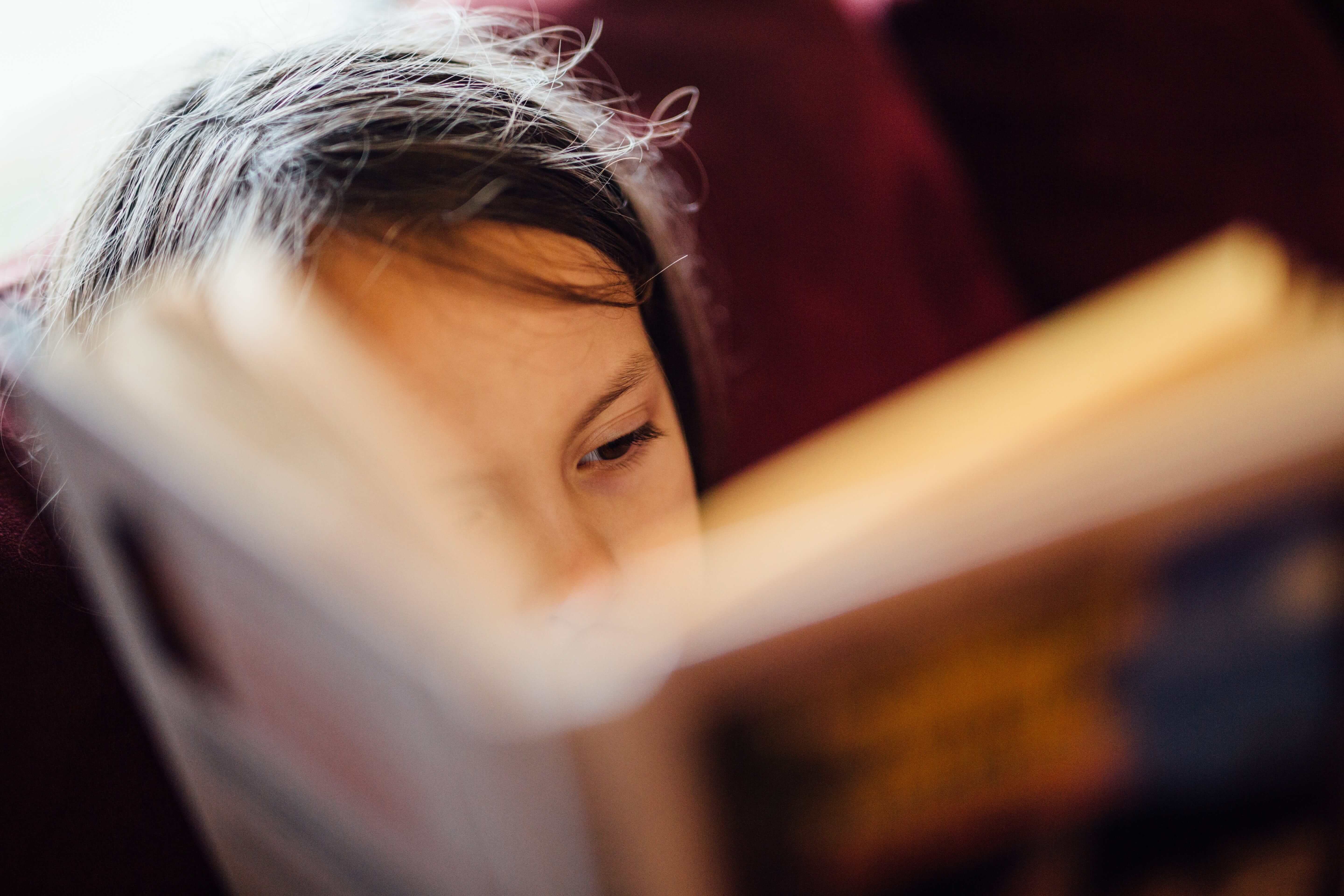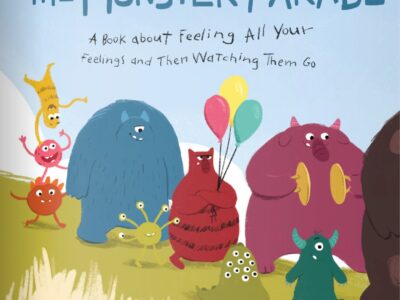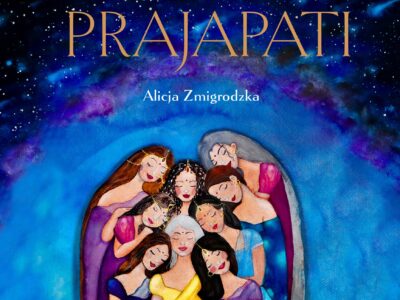A Contributor’s Favorite Books for Children
About This Resource
Details
A List of Books for Children on Buddhism, Mindfulness, Meditation, Yoga and Zen
Demi, Dalai Lama, a Biography of the Tibetan Spiritual and Political Leader (2004). Foreword by The Dalai Lama.
When the thirteenth Dalai Lama died in 1933, the highest holy men in Tibet searched throughout the land for his successor. They were spiritually guided to the humble dwelling of a loving family high in the Himalayas. When the search party greeted the youngest son, the child told them, “Now I am going home!” At last the fourteenth Dalai Lama had been found, and at the age of two, the young boy was taken to the capital city, Lhasa, where he began his training to become the spiritual leader of Tibet.
The work of the Dalai Lama and the fate of Tibet are topics of evergrowing international focus. In simple language and glorious art, Demi pays tribute to the fourteenth Dalai Lama’s remarkable life. She captures the beauty of Tibetan culture, as well as the charm, talent, and vision of one of the world’s best-known spiritual figures.
———————————————-
Dharmachari Nagaraja, Buddha at Bedtime: Tales of Love and Wisdom (2008)
Growing up in the modern world, our children have to cope with ever-increasing amounts of stress, which can hinder their development. The ancient wisdom of Buddhism, with its emphasis on peace, love and compassion, is the ideal basis for helping any child to face these challenges with inner confidence and calm. Building on the age-old art of storytelling, this beautiful book re-tells 20 ancient Buddhist tales in a way that is thoroughly fun and accessible to children. Featuring superb, full-page illustrations, the stories will transport kids into an imaginary world of enlightenment and discovery where they will meet delightful characters and discover an easy-to-understand Buddhist message—one that will help them think about how they can apply values such as patience, perseverance, honesty and generosity to their own lives. Designed to be read aloud by a parent or read by older children on their own, these compelling narratives provide a pleasurable, soothing transition into sleep.
———————————————-
Eliza Wheeler, What Does It Mean to be Present? (2010)
What does being present look like? Noticing when someone in your class needs help and taking the time to help them. Sound like? The rain outside your window. Smell like? Briny seaweed at the beach. Taste like? A bite of orange. Feel like? Allowing the rhythm of your breath, in and out …to make you feel peaceful. Follow a group of friends at school, at home, and at the beach as they experience just what it means to be present.
———————————————-
Gail Silver, Anh’s Anger (2009)
This wonderful and engaging story gives children and caregivers a concrete practice for dealing with anger and other difficult emotions. In Anh’s Anger, five-year-old Anh becomes enraged when his grandfather asks him to stop playing and come to the dinner table. The grandfather helps Anh fully experience all stages of anger by suggesting that he go to his room and, “sit with his anger.” The story unfolds when Anh discovers what it means to sit with his anger. He comes to know his anger in the first person as his anger comes to life in full color and personality. Anh and his anger work through feelings together with humor and honesty to find a way to constructively release their thoughts and emotions and to reach resolve with Anh’s grandfather. The story is beautifully illustrated with handmade collages by New York artist and childrens book illustrator Christiane Kromer. Each collage is a mix of paper, acrylic, and cardboard, and found materials. The materials reflect the connection between the characters and their environment and are indicative of the wide range of emotions that come together in the story. Anh’s Anger teaches children that it is okay to feel angry, and shows the technique, often used by child therapists, of externalizing the emotion. Through taking time to “sit’ with his anger, a young child is able to see his anger and talk to it and together they move through the journey of experiencing the different stages of anger until the feeling subsides and finally resolve. Anh’s Anger differs significantly from other books on anger resolution techniques in showing that the child is able to talk about what transpired and accept responsibility for hurtful things that he may have said or done. The author’s intention is to help parents understand that there is an alternative to “time out’s” as a means of helping children to express themselves when feeling angry, while providing children with a mechanism for internal dialogue during a “time out” or when “sitting” with their anger. Through reading the story, children will learn to acknowledge anger when it arises, understand the cause of their anger, and ultimately feel safe expressing themselves and accepting accountability for their actions when appropriate. By learning these skills, children, will grow comfortable with them and carry them into adulthood with ease and confidence. Anh’s Anger is the first in a planned series of three books with these characters.
———————————————-
Janan Cain, The Way I Feel (2005)
Praised by parents, who say it’s especially valuable when getting children to talk about the day’s triumphs and troubles, and by professionals, who use it in pediatric clinics and with the developmentally disabled and emotionally troubled. Janan Cain’s kids ooze anger and bounce with excitement as they teach the words for emotions. This award-winning, full-color book comes in two editions.
———————————————-
Janet Brooke and Jonathan Landaw, Prince Siddhartha: The Story of Buddha (2011)
This is the story of Prince Siddhartha and how he became Buddha, the Awakened One. Lyrical verse and beautiful full-color illustrations depict each major life event in Siddhartha’s development. His message of nonviolence, loving-kindness, and unselfishness is vitally necessary for today’s—and tomorrow’s—children. A story made for the telling—open this tale to a child and shore up the possibility of a bright and loving future!
———————————————-
Jo Witek, In My Heart: A Book of Feelings (2014)
Starring the same little girl in the same charming illustration style as Hello In There!, In My Heart explores emotions—happiness, sadness, bravery, anger, shyness and more. Unlike other feelings books that tend to oversimplify, In My Heart lyrically explains what an emotion feels like, physically, inside. For example: “When I get really angry, my heart feels like it’s going to explode! Don’t come near me! My heart is yelling, hot and loud. This is when my heart is mad.” Toddlers will be empowered by this new vocabulary and able to practice articulating and identifying their own emotions. On the cover and the right side of each spread, a die-cut heart decreases in size, creating a multi-coloured heart the depth of the entire book.
———————————————-
Joann Deak, Your Fantastic Elastic Brain: Stretch It, Shape It (2010)
Did you know you can stretch and grow your own brain? Or that making mistakes is one of the best ways your brain learns? Just like how lifting weights helps your muscles get stronger, trying new things without giving up-like finding the courage to put your face in the water the first time you’re at a pool-strengthens your brain. Next time, your brain will remind you that you overcame that fear, and you will be braver! As a consultant to schools worldwide on issues of brain development and gender equity, author JoAnn Deak, Ph.D., and illustrator Sarah Ackerley, have crafted a fun and engaging introduction to the anatomy and functions of the brain that will empower each young reader to S-T-R-E-T-C-H and grow their Fantastic, Elastic Brain!
———————————————-
Jon Muth, Zen Shorts (2005)
“Michael,” said Karl. “There’s a really big bear in the backyard.” This is how three children meet Stillwater, a giant panda who moves into the neighborhood and tells amazing tales. To Addy he tells a story about the value of material goods. To Michael he pushes the boundaries of good and bad. And to Karl he demonstrates what it means to hold on to frustration. With graceful art and simple stories that are filled with love and enlightenment, Jon Muth—and Stillwater the bear—present three ancient Zen tales that are sure to strike a chord in everyone they touch.
———————————————-
Jon Muth, Zen Ties (2008)
Summer has arrived—and so has Koo, Stillwater’s haiku-speaking young nephew. And when Stillwater encourages Koo, and his friends Addy, Michael, and Karl to help a grouchy old neighbor in need, their efforts are rewarded in unexpected ways.
Zen Ties is a disarming story of compassion and friendship that reaffirms the importance of our ties to one another.
———————————————-
Kerry Lee MacLean, Mindful Monkey, Happy Panda (2011)
This wonderful picture book for children and adults alike introduces the powerful practice of mindfulness in a fun and exciting way. With the delightful Monkey and his serene friend Happy Panda guiding readers to a calmer and more attentive mind, this whimsical yet warm presentation will delight all readers. As our story begins, Monkey is not so mindful—his Monkey Mind constantly jumping from one thing to another—but he encounters a mysterious and playful friend in Happy Panda. Panda helps Monkey recognize the simple joy of doing what you’re doing while you’re doing it.
———————————————-
Kerry Lee MacLean, Moody Cow Learns Compassion (2012)
This delightful sequel to Moody Cow Meditates reintroduces us to Peter (aka Moody Cow) and meet his mischievous “boys-will-be-boys” friend Bully. Along the way we meet a snake named Jaws, who also goes on to appear in Peter’s terrifying dreams, and watch as Bully revels in the deaths of the crickets he feeds the snake. Peter is uncomfortable with the plight of the little creatures, earning him a new nickname: “Coward Cow” because Bully thinks he’s a wimp. Once again, Grandfather, the beloved old steer from Moody Cow Meditates, brings serenity and long-horned wisdom as he gently teaches to compassionately identify with other beings. And the story ends with everyone sharing a laugh—and even Jaws and the crickets are happy. This book also includes two activities—compassionate cricket release and compassionate worm rescue—for parents and children to do together.
Find out details about the first part of this series on MWE’s list with recommended readings for kids here.
———————————————-
Kobi Yamada, What Do You Do with An Idea? (2004)
This is the story of one brilliant idea and the child who helps to bring it into the world. As the child’s confidence grows, so does the idea itself. And then, one day, something amazing happens.
This is a story for anyone, at any age, who’s ever had an idea that seemed a little too big, too odd, too difficult. It’s a story to inspire you to welcome that idea, to give it some space to grow, and to see what happens next. Because your idea isn’t going anywhere. In fact, it’s just getting started.
———————————————-
Maud Roegiers, Take the time: Mindfulness for Kids (2010)
What do you notice when you take the time to stop, listen, and experience? This pensive and peaceful book encourages children to slow down and become deliberate with their day-to-day actions and thoughts. With gentle rhythms and soothing imagery, kids may be guided toward a quiet self-awareness and mindfulness. And when a day feels stressful or topsy-turvy, kids can use such self-awareness to calm down and feel better. Kids can then enjoy the beauty of the world all around them and fully savour life.
———————————————-
Peter Reynolds, The Dot (2004)
One little dot marks the beginning of Vashti’s journey of surprise and self-discovery in Peter H. Reynolds’ multiple award-winning modern classic.
In this inspiring, award-winning story of self-expression and creativity from Peter H. Reynolds, illustrator of Ish and the Judy Moody series, Vashti thinks she can’t draw. But her teacher is sure that she can. She knows that there’s creative spirit in everyone, and encourages Vashti to sign the angry dot she makes in frustration on a piece of paper. This act makes Vashti look at herself a little differently, and helps her discover that where there’s a dot there’s a way… With wit, charm and free-spirited illustrations, Peter H. Reynolds encourages even the stubbornly uncreative among us to make a mark—and follow where it takes us.
———————————————-
Sarah Conover, Kindness: A Treasury of Buddhist Wisdom for Children and Parents (2010)
A Treasury of Buddhist Wisdom for Children and Parents.
———————————————-
Susan Verde, I Am Yoga (2015)
An eagle soaring among the clouds or a star twinkling in the night sky …a camel in the desert or a boat sailing across the sea—yoga has the power of transformation. Not only does it strengthen bodies and calm minds, but with a little imagination, it can show us that anything is possible. New York Times bestselling illustrator Peter H. Reynolds and author and certified yoga instructor Susan Verde team up again in this book about creativity and the power of self-expression. I Am Yoga encourages children to explore the world of yoga and make room in their hearts for the world beyond it. A kid-friendly guide to 17 yoga poses is included.
———————————————-
Thich Nhat Hanh, A Handful of Quiet (2012)
A Handful of Quiet presents one of the best known and most innovative meditation practices developed by Thich Nhat Hanh as part of the Plum Village community’s practice with children. Pebble meditation is a playful and fun activity that parents and educators can do with their children to introduce them to meditation. It is designed to involve children in a hands-on and creative way that touches on their interconnection with nature. Practicing pebble meditation can help relieve stress, increase concentration, nourish gratitude, and can help children deal with difficult emotions. A Handful of Quiet is a concrete activity that parents and educators can introduce to children in school settings, in their local communities or at home, in a way that is meaningful and inviting. Any adult wishing to plant seeds of peace, relaxation, and awareness in children will find this unique meditation guide helpful. Children can also enjoy doing pebble meditation on their own.
———————————————-
Thich Nhat Hanh, Planting Seeds: Practicing Mindfulness with Children (2011)
Planting Seeds: Practicing Mindfulness with Children is the fruit of decades of development and innovation in the Plum Village community’s collective practice with children. Based on Thich Nhat Hanh’s thirty years of teaching mindfulness and compassion to parents, teachers, and children, the book and enclosed CD cover a wide range of contemplative and fun activities parents and educators can do with their children or students. The activities are designed to help relieve stress, increase concentration, nourish gratitude and confidence, deal with difficult emotions, touch our interconnection with nature, and improve communication. Planting Seeds offers insight, concrete activities, and curricula that parents and educators can apply in school settings, in their local communities or at home, in a way that is meaningful and inviting to children. The key practices presented include mindful breathing and walking, inviting the bell, pebble meditation, the Two Promises or ethical guidelines for children, children’s versions of Touching the Earth and Deep Relaxation, eating meditation and dealing with conflict and strong emotions. Also included, are the lyrics to the songs on the enclosed CD that summarize and highlight the key teachings, as well as a chapter on dealing effectively with conflict in the classroom or difficult group dynamics, based on a conference with Thich Nhat Hanh, teachers and students. The accompanying CD has inspiring recordings of all the songs in the book as well as a guided pebble meditation, total relaxation, and children’s touching the earth. Beautiful, color illustrations by Wietske Vriezen Illustrator of Mindful Movements (ISBN-13: 978-1-888375-79-4) accompany the various practices. Any adult wishing to plant seeds of peace, relaxation, and awareness in children will find this book and CD helpful. It is full of wisdom on how to simply be with children and nourish their compassion for themselves and others.
———————————————-
Sister Thuc Nghiem, Thich Nhat Hanh, Each Breath a Smile (2005)
Inspired by the teachings of Thich Nhat Hanh.
———————————————-
Virginia Ironside, The Huge Bag of Worries (2011)
Wherever Jenny goes, her worries follow her—in a big blue bag. They are there when she goes swimming, when she is watching TV, and even when she is in the lavatory. Jenny decides they will have to go. But who can help her?
———————————————-
Yongey Mingyur Rinpoche and Torey Hayden, Ziji: The Puppy Who Learned to Meditate (2017)
Children will love learning the calming power of meditation alongside Ziji, a playful puppy. Ziji is a noisy, bouncy puppy who lives with the Anderson family: Mom, Dad, Jenny, and Baby Jack. He loves to bark and play and—most of all—chase pigeons in the park. Then one day, Ziji sees a new boy from Jenny’s school, Nico, sitting in the park. What is Nico doing? Why does he look so calm and happy? Ziji can’t wait to find out. This book, written by Yongey Mingyur Rinpoche, one of the new generation of Tibetan Buddhist masters, will teach your child the basics of meditation in a fun and engaging way. Included after the story is a guide for parents and teachers with more information on what meditation is and how it can be helpful as well as suggestions on how children can continue to practice meditation on their own.




